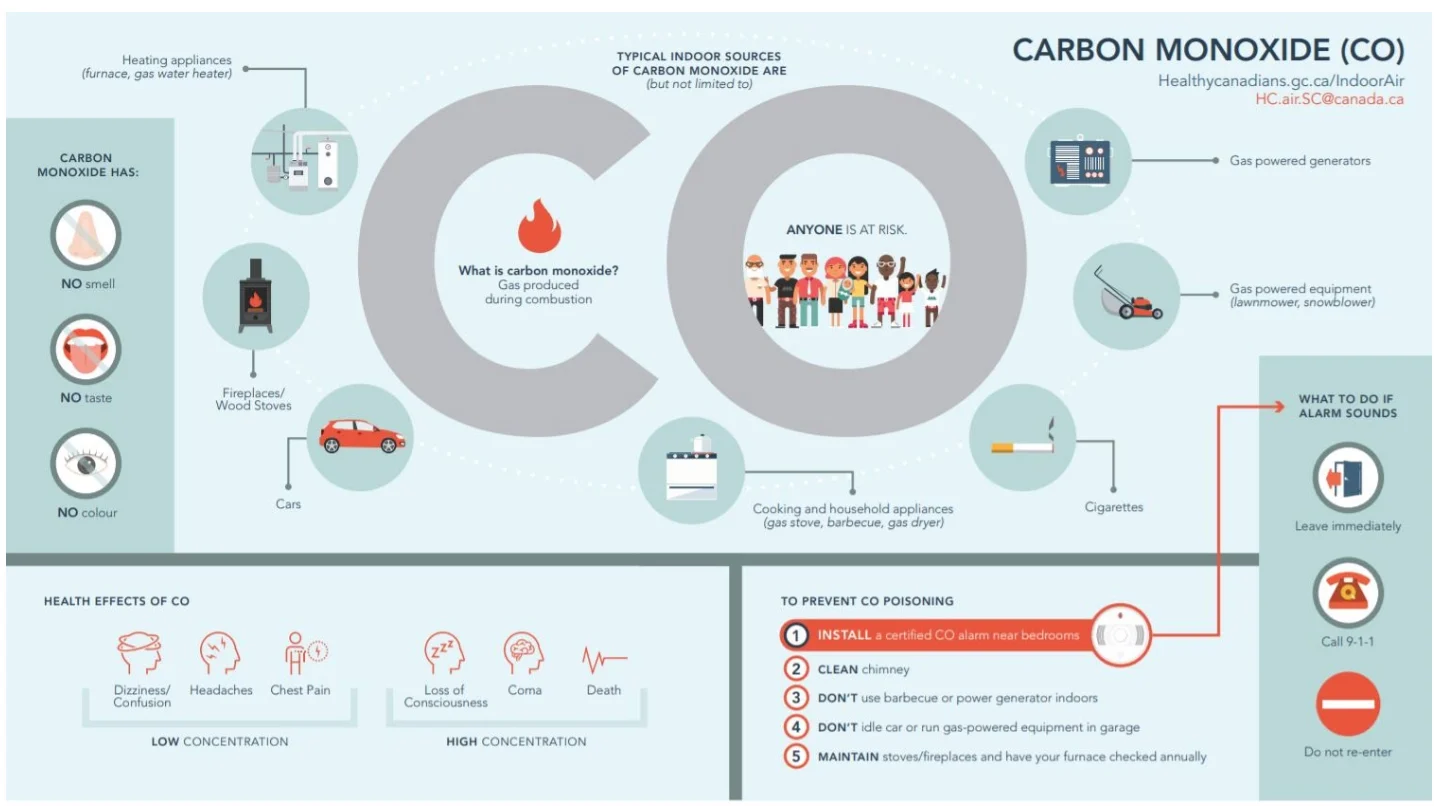
Fatal mistake: Don't confuse CO poisoning with COVID or the flu
Carbon monoxide poisoning can provoke flu-like symptoms, but it's a deadly mistake to confuse the two.
Carbon monoxide, or “CO”, poisoning is the leading cause of death due to accidental poisoning in North America.
The problem with this gas is that it is extremely hard to detect. It has no smell, no taste and is completely invisible. That is why this gas is called the “silent killer”.
People can become very ill when breathing in CO, and if poisoning is occuring, you may feel dizzy, weak or nauseous. Headaches and chest pain have also been associated with CO poisoning.
It is important to pay close attention to these symptoms, as they are similar to what people may experience when first coming down with COVID-19.
“It’s important to remember in all of this that carbon monoxide poisoning will not give you a fever,” says says Laura King from the National Fire Protection Association. “So, although symptoms are flu-like, there is no fever connected to CO poisoning.”

Source: Health Canada
SEE ALSO: Is it a cold, flu or hay fever? How to tell symptoms apart this winter
Canadians have enough to stress about this winter, so feel good about checking carbon monoxide off your list. Installing an alarm(s) in your home is the first step.
It is important to know the difference between the sound of your smoke alarm and carbon monoxide detector. If your CO alarm is going off, you will hear four quick beeps — this would signal an emergency, and everyone should leave the home immediately.
“Carbon monoxide poisoning happens when fuels in our home are incompletely burned — so things like gas propane and wood,” explains King. “That then gives off a carbon monoxide gas that enters the air. We then breathe in the carbon monoxide, the carbon monoxide then replaces the oxygen in our blood. This is why everyone should install an alarm as this is your earliest warning sign of exposure.”
The mandatory rules around CO alarms vary from province to province. Ontario and Manitoba have some of the most strict rules, requiring alarms in all homes no matter what the age.
That being said, whether it is a law in your province or not, the National Fire Prevention Association recommends one for every home. Watch the video above to see our interview with NFPA.
